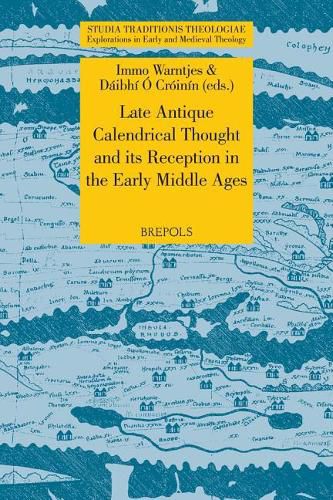Readings Newsletter
Become a Readings Member to make your shopping experience even easier.
Sign in or sign up for free!
You’re not far away from qualifying for FREE standard shipping within Australia
You’ve qualified for FREE standard shipping within Australia
The cart is loading…






Late antique and early medieval science is commonly defined by the quadrivium, the four subjects of the seven liberal arts relating to natural science: astronomy, geometry, arithmetic, and music. The seven-fold division of learning was designed in Late Antiquity by authors such as Martianus Capella, and these authors were studied intensively from the Carolingian age onwards. Because these subjects still have currency today, this leads to the anachronistic view that the artes dominated intellectual thought in Late Antiquity and the early Middle Ages. Quite the contrary, the artes were an idealized curriculum with limited application in practice. Certainly, the artes do not help in our understanding of the intellectual endeavour between the early fifth and the late eighth centuries. This period was dominated by computus, a calendrical science with the calculation of Easter at its core. Only computus provides a traceable continuation of scientific thought from Late Antiquity to the early Middle Ages. The key questions were the mathematical modeling of the course of the sun through the zodiac (the Julian calendar) and of the moon phases (in various lunar calendars). This volume highlights key episodes in the transmission of calendrical ideas in this crucial period, and therewith helps explaining the transformation of intellectual culture into its new medieval Christian setting.
$9.00 standard shipping within Australia
FREE standard shipping within Australia for orders over $100.00
Express & International shipping calculated at checkout
Late antique and early medieval science is commonly defined by the quadrivium, the four subjects of the seven liberal arts relating to natural science: astronomy, geometry, arithmetic, and music. The seven-fold division of learning was designed in Late Antiquity by authors such as Martianus Capella, and these authors were studied intensively from the Carolingian age onwards. Because these subjects still have currency today, this leads to the anachronistic view that the artes dominated intellectual thought in Late Antiquity and the early Middle Ages. Quite the contrary, the artes were an idealized curriculum with limited application in practice. Certainly, the artes do not help in our understanding of the intellectual endeavour between the early fifth and the late eighth centuries. This period was dominated by computus, a calendrical science with the calculation of Easter at its core. Only computus provides a traceable continuation of scientific thought from Late Antiquity to the early Middle Ages. The key questions were the mathematical modeling of the course of the sun through the zodiac (the Julian calendar) and of the moon phases (in various lunar calendars). This volume highlights key episodes in the transmission of calendrical ideas in this crucial period, and therewith helps explaining the transformation of intellectual culture into its new medieval Christian setting.